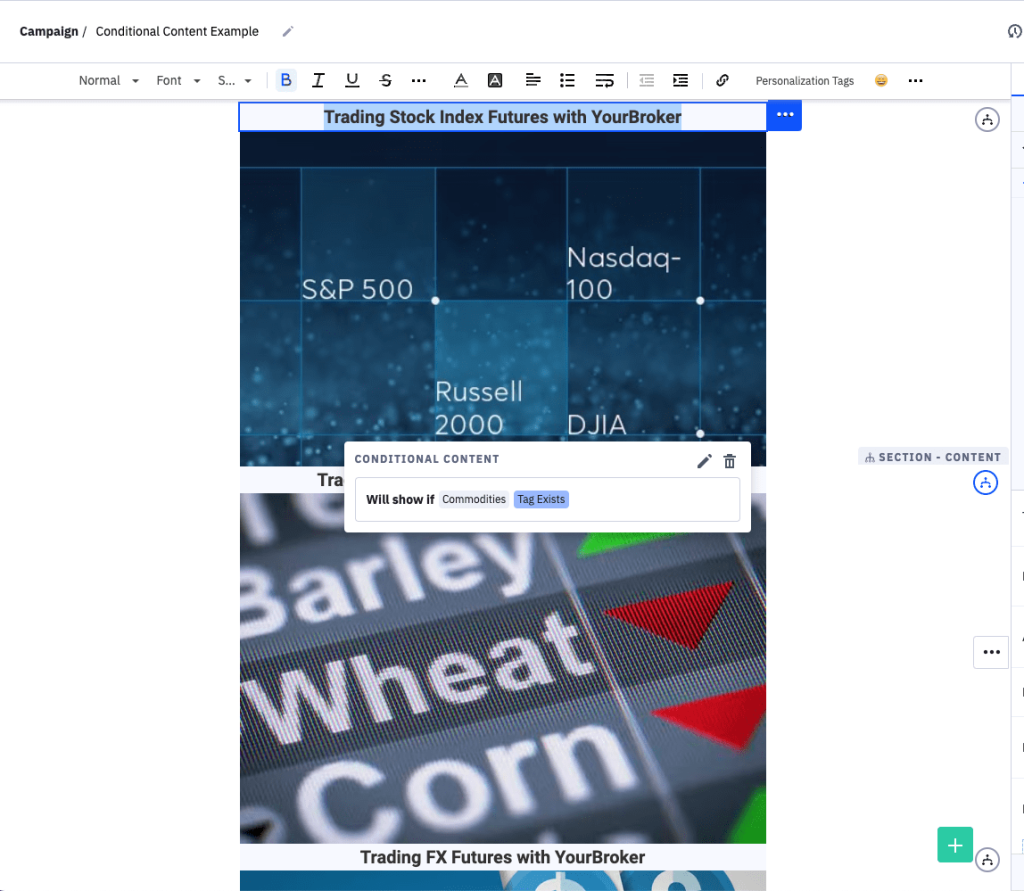When I am talking with a friend or colleague who wants to kickstart their marketing efforts, my approach is “simpler is better”.
It’s a lot like getting off the couch and back into the gym. Often the best way is to start simple and then build up from there.
So, what I’d like to suggest to you as a NIBA member firm is to get started with SEGMENTATION of your contacts and customers.
Imagine the difference in experience for a commodities trader who receives an email promoting opening an account.
In the first email, it has a general header that seems to focus on equity indexes and has several forex symbols shown.
In the second example, the entire header is showing commodities and the first content section is specifically about the advantages of trading commodities with your firm.
Which email is more likely to get their attention? Which is more valuable to them?
Segmentation is one of the most important factors in effective email marketing and messaging. Sending the right message, to the right group of people, at the right time reaches your target market and improves overall results. It’s not unusual to see a segmented targeted campaign perform 2-4 times better than a generalized message to a whole database.
Don’t be intimidated by the potential complexity, though. Just like getting off that couch, getting started is the only task you need to focus on to get started. Let’s try to get simple segmentation into your contacts before this Labor Day, to make your post-summer doldrums push more effective!
Your goal is to differentiate contacts by their actions or their attributes.
Actions are easy to understand: it’s how a contact has behaved interacting with your business.
They traded equity index futures. They traded commodities. They are a prospect that hasn’t opened an account yet. They funded their account. Executed over 100 trades.
An attribute is a quality or a feature about a contact.
For example, their asset class interests; the topics of your webinars and events they have registered for; where they are located.
Depending on the email marketing system you use, these contacts might be organized into Lists, Tags, Custom Database Fields, or some combination of these.
A good way to get started is to think of a couple of Actions and a couple of Attributes and apply these to all of the contacts in your database.
You probably already have a way to differentiate emails sent to customers vs. prospects. If not, I’d start there.
Next, I would try to get all the contacts roughly organized by the asset class they are most interested in, or trade the most if they are a customer.
Simpler is better when we’re getting started, so let’s create tags, or fields, that identify the contact’s favorite asset class:
FIELD: Preferred Asset Class
VALUES: Equity / Currency / Commodity
If you had just this one piece of data for all of your contacts, you could send a fall promotion that specifically spoke to people about their interest in Commodity trading, what your initial margins are, commissions, and used imagery to appeal to their interests.
It might seem like you’re tripling your work – now you’d have to create 3 emails instead of 1. But most of the time the changes between variations are pretty minor. And some email marketing platforms actually allow you to do all of the variations in one email and they’ll send the right content to the right contact based on their tags.
Segmentation can get as complicated as futures trading when you get deep into it. But getting started should be simple – what’s the simplest way you can differentiate between your prospective customers?
If you have other situations or want to discuss the concept further, email me at [email protected].
Skip Shean, CEO 16wells







